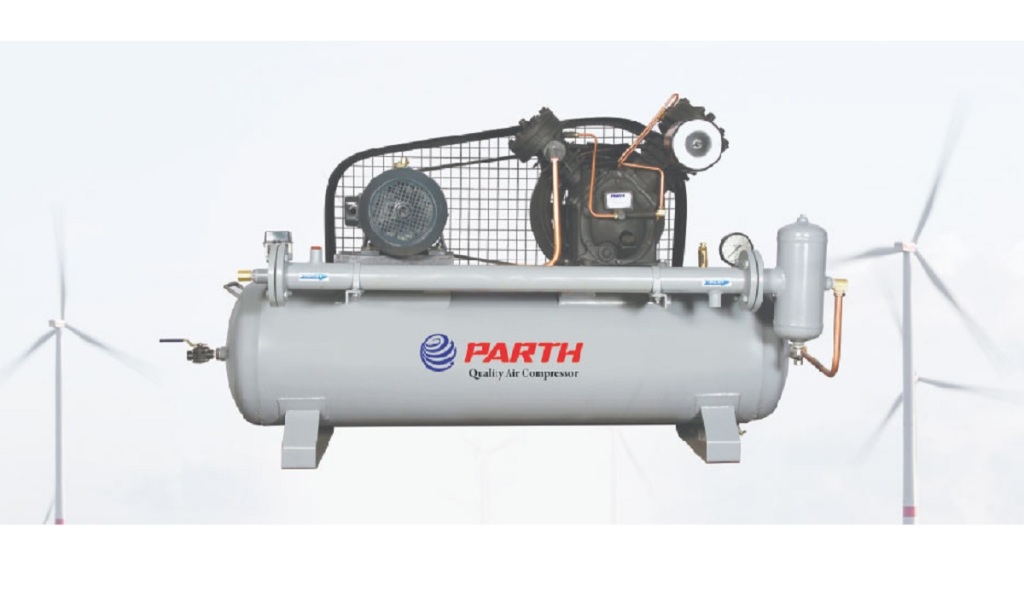
Are you thinking of buying a reciprocating air compressor for your workshop, garage or business? Here are a few things to know before buying!
An air compressor is a very big investment, so spend your time learning about air compressors as well as the various models and options.
Buying the wrong air compressor can be frustrating (in terms of utility, power or performance), but it can also lead to heavy maintenance costs down the future.
Here are 10 things to consider before going to the store to buy a reciprocating air compressor.
- Compressor type
There are mainly 3 types of reciprocating air compressors:
Single stage compressor
Two-stage compressor
Twin compressor
The single-stage unit compresses air into a shock, pressure from ambient to end. It usually increase to 20 CFM (cubic feet per minute) at a pressure of 125 psi
To get more power, you need a two-stage compressor. The two-stage compressor uses two stages to compress the air to its final pressure. This means the compressor has two cylinders/pistons.
The larger cylinder is the low pressure stage, while the smaller cylinder is the high pressure stage. The air is cooled in between the stages.
The two-stage air compressor goes up from about 175 psi to about 50 CFM capacity.
Whether you need a single-stage or two-stage compressor ultimately depends on the required capacity (cubic feet per minute).
- Capacity and pressure
Air compressor capacity (cfm) and pressure are the two most important characteristics.
To determine the required capacity, you just need to add the air consumption of all the air tools you will be using.
Smaller appliances like the Nailor only use a little air, while larger devices such as grinders and sander use a lot of compressed air!
To find out the required pressure, double-check the specifications of the pneumatic tools you plan to use. The maximum pressure required indicates the required pressure.
It is always wise to buy a compressor that can provide more than you need. Perhaps in the future you will add more tools and almost every compressed air systems will have leaky hoses or couplings somewhere!
- Horsepower
No need to know the horsepower of the air compressor.
Horsepower is the result of the necessary pressure and power that you need, not the other way round.
Don’t look at the horsepower. Look at capacity (cfm) and pressure (psi).
- Electrical connection
You will not be the first happy new compressor owner who comes into the house with an air compressor that he cannot connect!
Know the voltage at home. Find out the maximum current your wiring can handle. Do you have single-phase or three-phase power supply?
Installing additional electrical wiring (or even installing a three-phase power supply in your home!) Can be more expensive than an air compressor itself!
- Noise
Are you planning to install the compressor inside or outside?
A rotating compressor makes a lot of noise. Before purchasing a compressor, always check the noise level of the compressor. If you buy a compressor from a store, ask to run it so you can hear how it sounds.
Enclosures can be made around the compressor to reduce noise. Make sure you have added enough vents holes (and a fan if needed). The air compressor generates a lot of heat, so they need proper cooling!
- Tank size
Most reciprocating compressors have a 40 to 80 gallon tanks, which is a good thing.
The larger the tank size, the better. The larger tank means that there is a larger compressed air buffer.
A larger compressed air buffer is useful when using larger tools that consume more air than the compressor capacity. The pressure drops more slowly with a larger air tank.
- Compressed air filters
How much cleaning do you require of your compressed air?
The compressed air is hot, humid and dirty. Depending on the application, you need to filter it and extract water and oil.
If you use compressed air to spray paint, you do not need oils, water or dirt in the compressed air, the air must be very clean.
If you use it only to power the air equipment, you don’t need water into the compressed air, but you don’t really care for the oil.
Filters are available to remove water (drops), oil and dirt. To dry compressed air evenly, you need a compressed air dryer.
- Other options and additions
Here is a list of options to consider. Is it really necessary or is it optional?
Pressure regulator – to control the tank pressure back to stable, low pressure
Air connection size and number
Vertical or horizontal tank
Manual or automatic drainage
- Weight
Most (online) shops drop new air compressors along the way. You will need to take it to your garage or wherever you want to keep it yourself.
Your new air compressor will likely come on a wooden pallet. You can choose to place it on the pallet, or remove the pallet.
Before you buy a 600 lbs air compressor, think about how you want it to be!
- Working cycle
Finally, but certainly not least!
The duty cycle is the percentage of time that your compressor can operate.
Most single stage compressors only have a 50% duty cycle. This means that if you run the compressor for 5 minutes, it will take 5 minutes to cool down.
Most two-stage compressors have a 100% duty cycle. If necessary, they can work 24 hours a day.
Often advertised if the compressor has a duty cycle of 100%. Be careful not to mention the duty cycle. Probably only 50%!
The conclusion
As you can see, there are many things to consider when buying a new Air compressor from the Best Air Compressor Manufacturers in India. The list above will help you make the right decision. If you cannot choose between two models, always choose the larger one.
There is too much information in air compressor buying guide.